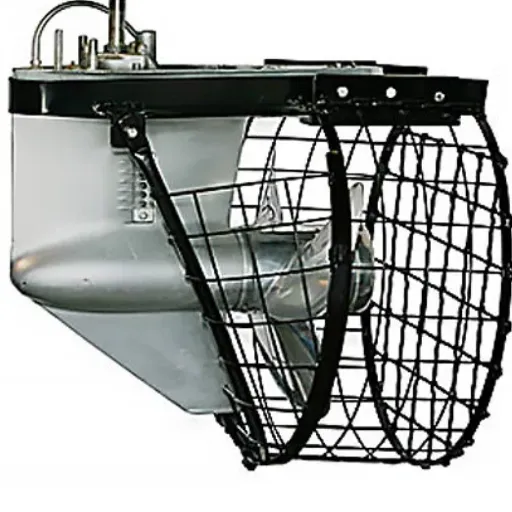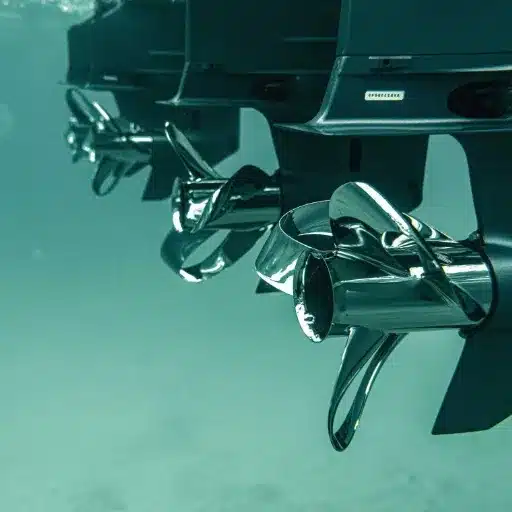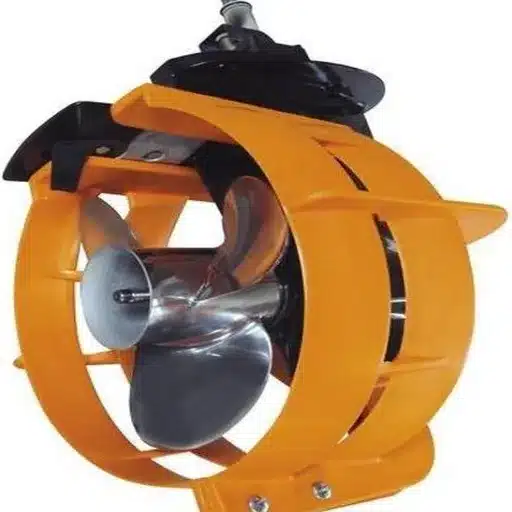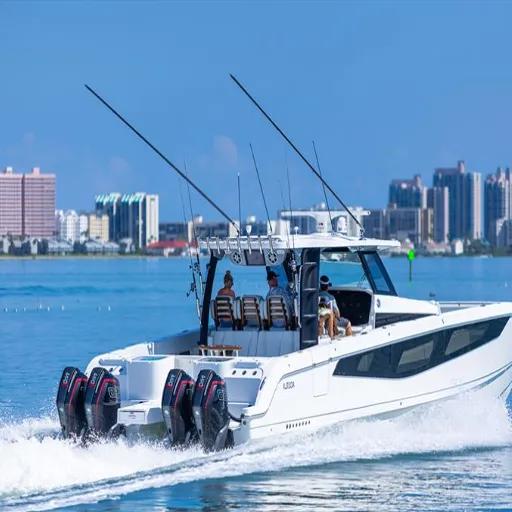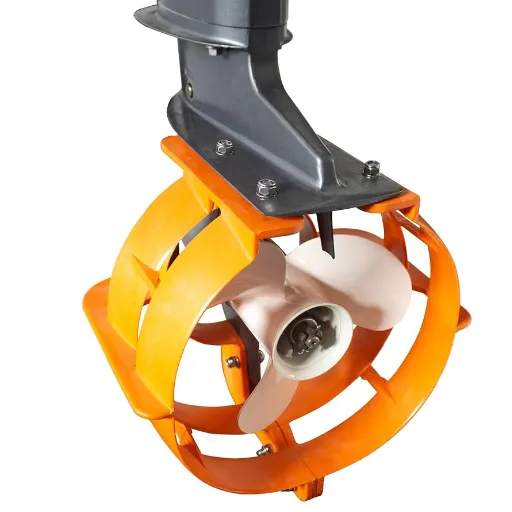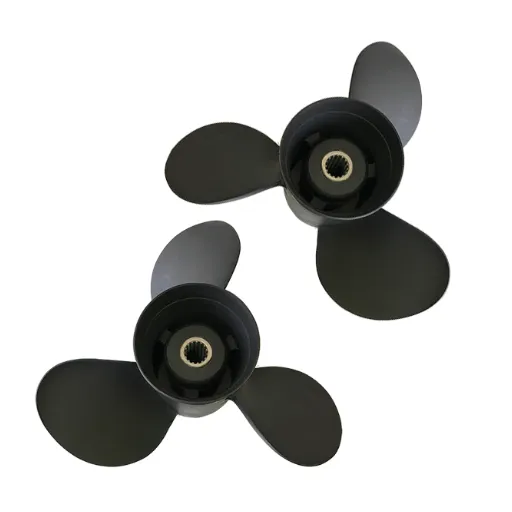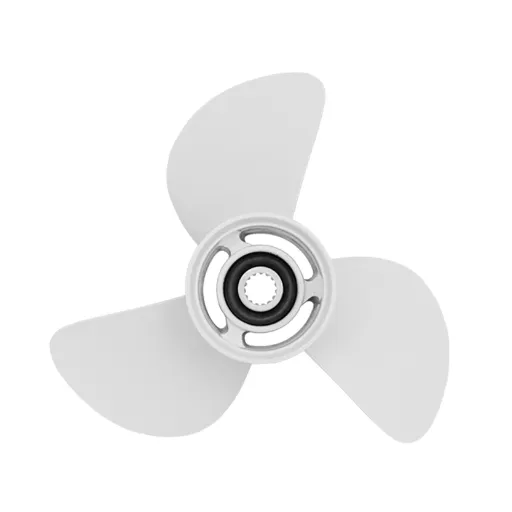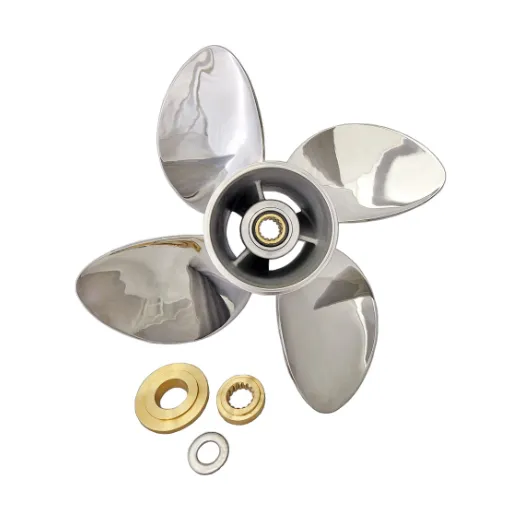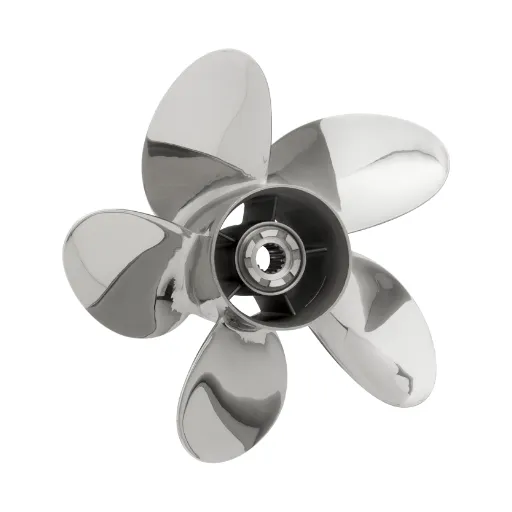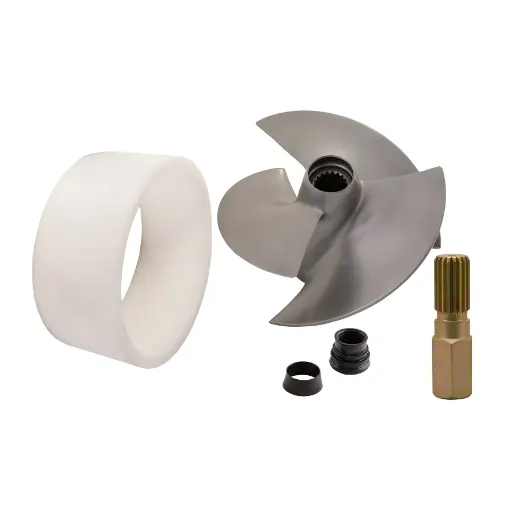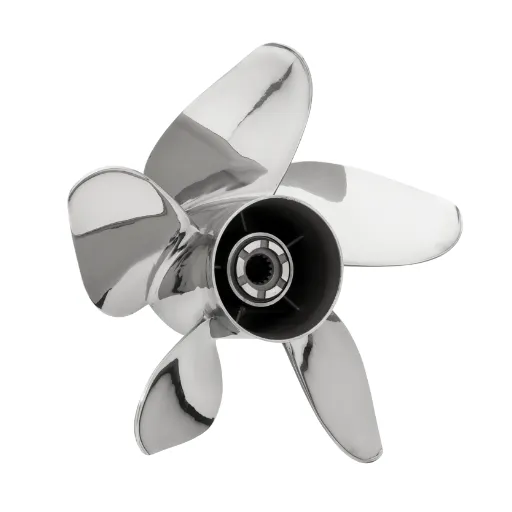Boating affords a one-of-a-kind freedom and enjoyment on the water. Still, this privilege comes with the highest level of safety responsibility for all passengers and those sharing the waterways. Propeller strike injuries, therefore, remain a grave concern, especially as waterways become busier and as recreational boating soars in popularity. This comprehensive guide aims to provide the leading choice strategies and related knowledge to boaters who are keen on avoiding propeller accidents, promoting safety and awareness. This article will carry you from understanding advanced safety technology to the adoption of best practices in navigation, thereby providing you with the tools and insights to save lives while ensuring every bit of the boating experience is kept fun and safe.
Understanding Propeller Strike Injuries

What Are Propeller Strike Injuries?
The propeller strike injuries form when one comes into direct contact with the spinning blades of a boat’s propeller, which commonly inflicts severe traumas, lacerations, and fractures, or in very terrible scenarios, even deaths. These incidents are typically observed when an individual falls overboard, swimmers are in proximity to an active propulsion facility, or during watersports activities. In recent years, it has been recorded that propeller-related accidents make up a significant number of deaths annually, with several hundred requiring emergency medical attention. The grim-looking injuries seriously truncate the lives of the patients, or they can linger for psychological and financial consequences in the long term.
Modern-day safety precautions for propellers, such as engine cut-off switches and propeller guards, help mitigate hazards in the event of a mishap. Still, gaining a greater grasp of how these injuries occur and under what conditions can help improve safety. Operator inattention, excessive speed, and failure to check the surroundings before firing up the engine are typical factors in propeller injuries. Therefore, there must be established norms and safety measures to increase awareness about propeller-related accidents among all boat occupants.
Accident Statistics for Propeller Strikes
Key Statistics:
- 150-200 accidents reported annually in the United States
- 15% of all boating fatalities are propeller-related
- 25% of victims are children and inexperienced swimmers
- Majority of deaths involve alcohol or operator negligence
Propeller strike accidents continue to pose a significant hazard to the maritime sector, with thousands being reported each year worldwide. According to recent industry reports, the United States Coast Guard registers anywhere from 150 to about 200 recreational boating propeller strike accidents each year, which have resulted in numerous injuries and deaths. Such incidents account for around 15 percent of all reported fatalities from boating-related accidents.
From the closer perspective of victim analysis, the majority of victims are swimmers or passengers ejected from the vessel who sustain varying injuries ranging from lacerations and fractures to trauma that can be life-threatening. In particular, nearly one-fourth of the reported cases involve children and less-experienced swimmers, who are at a disproportionately high risk. Additionally, studies have confirmed that a large percentage of deaths related to propellers involve either alcohol or operator negligence, pointing fingers at the foremost need for prevention.
In recent years, advances in safety technology, such as emergency engine-off devices and propeller guards, have shown promise in preventing such accidents. However, regular use and training still constitute major hurdles. This clearly shows how improving safety features and running awareness campaigns will contribute to reducing propeller strike accidents.
Common Causes of Propeller Strike Incidents
Typically, human action, environmental conditions, and mechanical causes lead to a propeller strike accident. Operator negligence or operator inexperience stands tall among the causes; many times, operators allow themselves to be distracted, especially in heavily trafficked zones or recreational areas. Engaging in dangerous behaviors at the trial level, such as operating vessels under the influence of alcohol or any other intoxicant, only increases the possibility of an accident.
Human Factors
- Operator negligence or inexperience
- Distraction in high-traffic areas
- Operating under the influence
- Improper boarding/disembarking
Environmental Conditions
- Sudden weather changes
- Strong wind gusts
- Water current fluctuations
- Reduced visibility at night
Another significant contributor to this problem is the absence of safety devices, such as propeller guards, that inhibit direct contact with spinning blades. Sudden weather changes, strong wind gusts, and quick fluctuations in water currents may destabilize boats, throwing passengers off and exposing them to propeller injuries. Improper ways of boarding and disembarking from a ship heighten this risk, especially when the boats lack good-fitting ladders or safety rails.
An engine malfunctions or any mechanical failure not addressed during routine maintenance could lead to mishandling situations, thus creating opportunities for propeller strikes. Reduction of visibility at night or in the murky waters can also result in errors in the distance or position of swimmers or objects near the boat. Such underlying causes stress the urgent need for standardized safety training, strict adherence to safety maintenance procedures, and integration with advanced safety technologies to protect the passengers and crew.
Essential Safety Equipment for Boaters
Engine Cut-Off Switch: What and Why
They are safety devices designed to prevent accidents by stopping the vehicle suddenly, and in cases of unexpected movements, such as a person being displaced from the helm. These kill switches shut down the boat engine cyclically, the moment the operator is separated from the control, at the risk of a fleeing boat and injuries from propellers.
| ECOS Type | Description | Advantages |
|---|---|---|
| Lanyard-Based | Physically connects operator to switch | Automatic activation, reliable connection |
| Wireless | Uses radio frequencies or Bluetooth | Freedom of movement, modern technology |
Modern ECOS technology involves lanyard-based systems and wireless options that detect displacement through radio frequencies or Bluetooth technology. The lanyard system physically ties the operator to the switch, ensuring it activates automatically in the event of accidental ejection. Wireless ones, on the other hand, offer more freedom of movement within the vessel, while safeguards are still in place. Currently, federal regulations would require ECOS to be installed on various recreational boats in the U.S., emphasizing its status as a standard maritime safety feature.
It is proven by accident reports that ECOS works. When a boat operator fails to use the kill switch, a substantial portion of runaway-boat incidents is caused by this very aspect, underlining the essential role of this safety device in preventing property damage and fatalities. Boaters are urged to regularly check their ECOS to ensure it operates at peak performance. Following safety procedures that incorporate this vital technology represents a proactive movement toward raising the safety standards of recreational boating.
Using Lanyards Effectively
The proper use of lanyards in Engine Cut-Off Switch Systems is crucial for enhancing safety in boating. Lanyards essentially act as a tethering medium between the operator and the ECOS from which the engine is cut off immediately if the operator falls away from helm. Lanyards must be attached to the operator at all times to ensure the proper functioning of the system. The best points of attachment are usually the wrist or the belt of the operator, or any other convenient attachment point. Operators should inspect the lanyard for signs of wear, such as fraying, loss of elasticity, or damaged clips, anytime before use. Any of these conditions may impair the lanyard’s performance, potentially leading to failure during operation. It is also necessary to ensure lanyard compatibility with the specific ECOS to be used, as any incongruities would render it inoperable. If operators maintain lanyards in perfect working condition and use them consistently, many accidents related to unauthorized vessel movement would be significantly diminished.
Lanyard Safety Checklist:
- ✓ Attach to wrist, belt, or other secure point
- ✓ Inspect for fraying or damage before each use
- ✓ Check elasticity and clip functionality
- ✓ Ensure compatibility with ECOS system
- ✓ Replace if any wear is detected
Other Important Safety Equipment on Board
Several other items constitute critical safety equipment that must be present on a vessel to ensure the safety of all passengers and crew and shall be subject to marine safety standards. Notably, PFDs are required for every boat, with a number equal to the number of passengers or crew on board, which should be available in sizes suitable for both adults and children. It is, therefore, highly advisable to have them Coast Guard-approved, which implies that their performance under emergency conditions has been tested for reliability.
Personal Flotation Devices
Coast Guard-approved PFDs for all passengers, including children’s sizes
Emergency Signals
SOLAS-compliant distress flares within expiry date
Communication
Marine VHF radio for reliable water communication
First Aid & Fire Safety
Marine first-aid kit and fire extinguisher
Emergency signals come under another major group. Among other signals are distress flares, which alert nearby ships to emergencies. Flares must comply with SOLAS (Safety of Life at Sea) standards and should be within their expiry date to guarantee their functioning. A marine VHF radio should be available on every vessel as the primary communication and navigation device; the use of mobile devices is not encouraged, as they may fail to operate when the signal is lost far out at sea.
Another item of utmost importance is a well-stocked marine first-aid kit. The kit should include treatment for wounds, medication against seasickness, and treatment for minor injuries that may be encountered during a boat trip. This is when the fire extinguisher will also come in handy, especially in the case of marine-rated ones.
Lastly, throwable flotation devices and safety ladders assist in man-overboard situations, helping the crew to recover the person from the water effectively. One further layer of safety can be added by including an emergency position-indicating radio beacon (EPIRB) or a personal locator beacon (PLB) that transmits location signals to a rescue operation in the event of an emergency. By outfitting, taking care of, and maintaining these items, vessel operators maximize readiness and comply with all relevant safety regulations, thus greatly lowering the risk in any type of marine environment.
Best Practices to Prevent Propeller Strikes
Pre-Departure Checklist for Safe Boating
A thorough pre-departure checklist helps ensure safety enforcement and promotes compliance with maritime laws. A few steps to consider for your checklist are as follows:
Complete Pre-Departure Safety Checklist
1. Safety Equipment Verification
Verify the presence and functionality of all required safety equipment. These include life jackets, throwable flotation devices, fire extinguishers, and visual distress signals. Also, ensure that signaling devices, such as whistles or horns, are operational, along with radar reflectors.
2. Propeller Area Checks
Clear the propeller area of obstacles, marine life, or debris before engine start. This precaution comes before initiating the engine to prevent damage or injury caused by unintended strikes.
3. Fuel System Safety
Check the fuel system for any potential leakage, ensuring that hoses, tanks, and fuel fittings are secure and free from wear-related obstructions. Also, ensure the fuel tank is filled to a sufficient level for the voyage, leaving a reserve for any unforeseen delays.
4. Navigation and Communication Systems
Check the onboard GPS, compass, VHF radio, and any other navigational or communication devices to ensure they are functioning correctly. Ensure that emergency numbers are programmed into the communication devices.
5. Weather Assessment
Weather forecasts should be checked for any possible adverse conditions that could jeopardize your vessel and crew. Be careful if conditions of high winds, thunderstorms, or reduced visibility are forecast.
6. Engine and Electrical Systems Evaluation
Ensure a thorough inspection of the engine and electrical system, keep the batteries charged, maintain proper connections, and verify that critical items are in good working order.
7. Passenger Briefing
Upon the entire group boarding, a detailed safety briefing must be given, which shall include the location of emergency equipment and its use in emergencies, man-overboard procedures, and procedures for getting on or off the vessel.
8. Documentation and Regulations
Ensure that all required documentation, including registration, permits, insurance, and a copy of local regulations on maritime safety, is in place. Additionally, ensure conformity to any applicable rules in the relevant area.
9. Secure Load Distribution
Load and secure cargo and equipment correctly to ensure vessel stability. Any overloading or improper distribution of weight can hinder navigation, posing a significant safety risk.
10. Emergency Positioning Devices
Assure that EPIRBs or PLBs are activated and registered correctly. Verify battery life and ensure that the devices are always easily accessible in case of an emergency.
By following this comprehensive pre-departure checklist, the skipper will reduce the likelihood of an accident, ensure all passengers and crew enjoy optimal safety, and meet specific maritime safety standards.
Educating Passengers About Propeller Safety
Passenger education about propeller safety is a crucial step in reducing the risks associated with a safe boating trip. Begin by holding a safety briefing before departure, explaining the danger posed by the propeller when the engine is running. Then go through the key points that must be observed; for example, avoiding the vicinity of the stern and never swimming in the water near the propellers.
Key Safety Education Points:
- Explain propeller dangers when engine is running
- Demonstrate proper use of safety equipment
- Show blind spots and hazard zones around vessel
- Emphasize importance of proper-fitting life jackets
- Teach children about staying seated while boat is moving
- Review safety information regularly with updates
Visual aids could be used to illustrate the dangers better and to include diagrams of blind spots, the position of the propellers, and hazard zones that are present along the vessel. Studies have proven that visual representation can significantly enhance the retention of safety-related information.
Emphasize the importance of wearing a life jacket that fits properly to prevent accidental submersion near the propeller. When instructing families with children, special emphasis should be placed on sitting still while the boat is moving and avoiding sudden movements that may lead to falling overboard.
To build awareness, operators should demonstrate to passengers the proper use of safety equipment, such as propeller guards and engine cut-off devices. They should explain how these technologies help prevent injuries, so passengers remain more vigilant. This safety information should be reviewed periodically, in accordance with industry updates or recommendations from manufacturers, to keep passengers informed of best practices.
Regular Equipment Inspection
Routine equipment inspections are crucial to ensuring the safety and functionality of any ship. Inspections would encompass the evaluation of systems critical to operations, such as checking engines, fuel systems, navigation equipment, and safety gear. Engine components would be checked for wear, leaks, or blockage that could impair performance or cause system failure. Fuel systems shall be inspected for the presence of corrosion, cracks, and loose connections, which could otherwise lead to leaks or fire hazards.
Critical Statistic:
Over 75% of maritime accidents have mechanical failure or equipment-related problems as their cause
Life jackets, firefighting equipment, and communication devices must be approved by relevant authorities and maintained in operational condition. It is equally important to verify expiration dates for consumable items, such as fire extinguishers, and ensure that these are within their expiration date. Data indicate that over 75% of maritime accidents have either mechanical failure or equipment-related problems as their cause; this stresses the importance of regular maintenance procedures.
Let’s first summarize the points presented here. As a crew member, you can track wear-and-tear trends and address them while there is still time by utilizing detailed checklists and established maintenance schedules. An inspection also ensures safety standards are met, as set according to new industry findings or updated by the manufacturer. Logging of these inspections provides a documented trail enabling audits and verifying compliance and due diligence in mitigating risks.
Trends in Boating Safety for 2025
Advanced Technology for Propeller Injury Prevention
One great danger in the boating world I’ve touched upon here was the dreaded propeller-related injuries. The design of any advanced technological system must limit such dangers. The presence of a propeller guard is probably the single greatest advance; it physically shields the propeller from any need to touch persons or objects in the water. These devices now undergo advanced hydrodynamic shaping to prioritize performance over safety.
🛡️ Propeller Guards
Advanced hydrodynamic designs that physically shield propellers while maintaining performance
📡 Electronic Sensors
Sonar systems detecting persons/objects in water with automatic engine shutdown capabilities
📱 Wireless Technology
Wearable devices and smart tags that signal propeller disengagement when approaching danger zones
🤖 AI Predictive Systems
Machine learning algorithms analyzing boating patterns to forecast high-risk propeller accident zones
Another advancement is the use of electronic sensors and sonar systems that can detect persons or objects in the water, sending alarms to warn the operator. Another smart technological integration could be stopping engines with an automated mechanism that provides the operator with a warning. If no action is taken, the engine is stopped immediately by the software within seconds, preventing the object from hitting the propeller.
Then, there is an increase in the use of wireless lanyard technologies and mountable wearable devices such as tags or wristbands. Upon approaching the danger zone or if the victim falls overboard, this setup signals the disengagement of the propeller from the engine system. What we have here is a generalized, adaptive solution for enhancing safety for both recreationalists and professional operators.
Data-driven systems are also making their presence felt. Predictive models are being generated to forecast zones of high risk related to propeller accidents by implementing machine learning algorithms and analyzing past boating patterns. Prevention can then be instilled in these areas, where traffic is heaviest. Together, these innovations articulate a strong, multidisciplinary approach toward reducing propeller injuries in aquatic zones.
Emerging Safety Protocols for Recreational Boating
Over the last few years, boating safety has seen considerable growth due to the efforts of legislators and researchers to reduce accidents and improve safety levels. One of the paramount issues of development concerns the modernization of PFDs, whose materials are indeed advanced in the twenty-first century and comfortable to wear, along with being strengthened; additionally, they are furnished with facilities of GPS tracking and automatic distress signaling. These specifications ensure increased adherence by boaters, with provisions also ensuring their safety in emergencies.
Modern PFD Features:
- Advanced 21st century materials for comfort and strength
- Integrated GPS tracking capabilities
- Automatic distress signaling systems
- Improved design for better compliance rates
Another notable breakthrough is the implementation of real-time monitoring systems utilizing IoT technologies. Boats with IoT-enabled systems transmit vital information, such as speed measurements and engine status, as well as weather information, to operators and authorities, allowing them to make informed decisions and reduce risk. Upon the system’s warning about collisions or hazardous zones to nearby vessels, it will create an interconnected and safer boating ecosystem.
In many jurisdictions, stricter safety training requirements have been introduced. Hence, boat operators will have to attend and certify in various training schemes, including navigation, emergency response, environmental hazard awareness, and similar. These programs ensure that operators safely navigate the complexities of present-day waterways. With such programs in place, along with some automated technologies such as obstacle detection and autonomous braking, safety interventions have significantly reduced accidents in recreational boating.
Case Studies on Successful Safety Interventions
🇳🇴 Norway Case Study
Key Interventions:
- Mandatory life jacket requirements
- Alcohol restrictions for operators
- Public information campaigns
- Advanced boat handling courses
Results (2010-2020):
40% Reduction in Boating Deaths
🇦🇺 Australia Case Study
Key Interventions:
- Electronic distress signal registration
- GPS-enabled Personal Locator Beacons
- Central maritime rescue database
- Comprehensive user training programs
Results (2015-2022):
25% Reduction in Offshore Drownings
One significant example comes from Norway, where strict safety regulations for recreational boating have been noted for their successful outcome. The Norwegian Maritime Authority implemented rules requiring the use of life jackets and restricting the consumption of alcohol by boat operators. This act was supported by extensive public information campaigns highlighting the dangers of impaired operation and the importance of carrying adequate safety equipment. Between 2010 and 2020, the number of deaths due to boating dropped by 40 percent, according to the national safety reports. Moreover, voluntary enrollment in advanced courses for safe boat handling increased, indicating a cultural shift toward safer boating practices.
Another instance came from Australia, where the running of an electronic distress signal registration system helped reduce response times during emergencies. The distress detection system is built upon PLBs provided with GPS and linked to a maritime rescue database at the central level. Once switched on, the PLB transmitters will transmit the user’s GPS coordinates to search and rescue teams, allowing assistance to be dispatched without delay. A review conducted over incident statistics from 2015 until 2022 suggested that fatalities in offshore drowning incidents almost fell by 25% after adopting the system. Most importantly, users were trained through initiatives that accompanied the system, ensuring further implementation of the correct use of the PLBs.
All of the preceding examples underscore the need for a multifaceted approach to recreational boating safety interventions. Such interventions consist of combinations of regulatory oversight, technological innovation, and public education to implement policies that have been shown to measurably improve safety outcomes.
Community Engagement and Boating Safety Education
Importance of Community Awareness Programs
Community awareness programs, to me, hold the fort in the development of recreational boating safety. Yet, they stand as a bridge over the gap between regulations and human behavior by providing individuals with information and tools to help them make safety decisions. For example, when a program includes information about safety equipment, such as life jackets, fire extinguishers, and VHF radios, it ensures that regulations are not only being complied with but also understood from a practical perspective. Workshops and safety demonstrations join the interactive realm, encouraging participants to commit to safe boating.
Community Program Benefits:
- Bridge regulatory compliance with practical understanding
- Address localized environmental conditions and risk factors
- Harness local knowledge from marina operators and organizations
- Foster mutual responsibility within boating communities
- Enhance safety measure adoption through peer influence
Community awareness programs stand out due to their ability to address problems that may be particularly localized and thus overlooked by macro-level policies. With each community having its own unique local environmental conditions, boating trends, and associated risk factors, customized awareness programs tailored to these local issues will be much more effective. These programs, involving local players, including marina operators and recreational boating organizations, allow the harnessing of the local population’s knowledge and resources while fostering mutual responsibility. This cooperation significantly enhances the adoption of safety measures, reduces boating-related accidents, and, in turn, supports the overall safety culture within the recreational boating community.
Boater Training Resources
When it comes to building safer boating practices, a myriad of training options are available to accommodate the various needs of recreational boaters. Some of these may be online training modules, while others may be hands-on courses. Training resources are designed to provide boaters with the fundamental knowledge and skills essential for boating. The U.S. Coast Guard Auxiliary offers one of the best opportunities to start, with a variety of safety courses available on topics such as navigation, emergency procedures, and boat handling. These courses are designed for both new and experienced boaters, allowing participants to grow their competence in either direction, depending on their level of expertise. These are also essential courses that must be taken in accordance with NASBLA-approved courses, ensuring uniformity and adherence to national boating safety standards.
| Training Type | Provider | Format | Key Benefits |
|---|---|---|---|
| Coast Guard Courses | U.S. Coast Guard Auxiliary | In-person workshops | Navigation, emergency procedures, boat handling |
| NASBLA-Approved | Various certified providers | Standardized curriculum | National uniformity, regulatory compliance |
| Online Platforms | Boat-Ed, BoaterExam | Interactive digital | Self-paced, videos, quizzes, case studies |
| Practical Workshops | Local marine schools | Hands-on water training | Real-life application, confidence building |
These days, an interactive online training platform, called Boat-Ed or BoaterExam, allows for study at any time and at any pace. Often, such programs incorporate engaging elements, such as videos, quizzes, and case studies, to make the learning process inclusive and thorough. Some states even make it mandatory to pass approved courses in boating safety, further testifying to their importance.
A variety of schools can offer practical workshop classes or even boat training on water. Such exercises solidify the understanding of theoretical concepts by forcing boaters to relate them to real-life situations directly. The synthesis of these off-the-water training options will enable boaters to meet their regulatory requirements while maintaining the confidence and capabilities necessary for safe navigation and operation on the water. Investments in boaters’ training will ensure that individual operators remain safe while also sustaining that at a broader level.
Joint Efforts to Decrease Propeller Strike Incidents
Reducing propeller strike incidence is a collaborative effort, whereby regulatory agencies, manufacturers, boating associations, and operators must combine their efforts in prevention. The research and exploration of the subject to date indicate that one of the most effective preventive measures has been the installation of guard systems and engine cutoff devices. Manufacturers have continued to evolve propeller guards in an attempt to prevent contact with a spinning propeller. The installation of modern engine cutoff switches, which disable an engine when the operator falls overboard, provides that extra safety layer. These devices are becoming a compulsory requirement across many jurisdictions following various regulatory changes, including the U.S. Coast Guard’s enactment of its engine cutoff switch law, which took effect in April 2021.
Collaborative Prevention Strategies:
Regulatory Agencies
Enforcement of safety laws and standards
Manufacturers
Development of safety technologies
Boating Associations
Education and awareness campaigns
Operators
Safe practices and vigilant operation
These incidents are also being tempered by education and awareness campaigns. It is an ongoing process that features numerous training programs and the distribution of materials warning operators about the safe handling of boats, in collaboration with various boating safety organizations. They urge the operator to maintain a vigilant lookout, steer clear of waterways that are too busy, and never violate no-wake zones. Boating safety instructors should be made mandatory so that operators understand the hazards involved in propeller activities and their responsibilities in the event of a propeller strike.
Such work is therefore aimed at developing cutting-edge technologies to enhance innovation and its associated safety technologies. A lot of safety researchers in marine-related fields work with the solution industry toward developing early detection systems, such as sonar-type technologies, to warn operators of persons submerged or underwater obstructions near the propeller. These joint efforts demonstrate that improving safety is a multifaceted, cooperative effort involving all interested parties.
Reference Sources
- How to Prevent Propeller Strikes – Boat-Ed
- Boat Propeller Strikes: Prevent Injuries and Accidents – Drive A Boat USA
- Boat Propeller Injuries: Causes, Risks, and Prevention – Propeller Propeller
- Equipment on a Boat: Prevent Propeller Strike Injuries – Captain Propeller
- Propeller Strikes – Ohio Department of Natural Resources
- Click here to read more.
Frequently Asked Questions (FAQs)
How can boat operators prevent propeller strike injuries?
Boat operators can drastically reduce the likelihood of propeller strike injuries by maintaining vigilant stares, especially in congested areas where people may be in the water. One should always look around the propeller area and turn the engine off if someone falls overboard. Additionally, ensure that the boat has an ignition safety switch or kill switch that shuts off the engine if the operator is ejected. Teaching the whole crew about the hazards of a propeller strike and appointing an adult to oversee safety can help prevent accidents.
What safety equipment is crucial in preventing propeller strikes?
Prevention of propeller strike accidents hinges greatly upon safety equipment. Life jackets are the foremost safety equipment that everyone must wear, especially when swimming or near the swim platform. Self-circling devices, if designed to be used, may help keep people far away from the propeller area. Another safety equipment, the cutoff switch or ignition safety switch, is fitted to ensure the engine cuts off the power supply if the person is either thrown off and cast adrift or has stepped aside. This serves as an added safeguard against propeller injuries. Tufting safety equipment and periodic maintenance contribute to adequate boating safety.
How exactly will training help decrease the risk of propeller injuries?
Boating safety training significantly reduces the risk of propeller accidents. Safety courses educate boaters regarding the perils of propeller strikes and the safe operation of their boat around people in the water. Taking the utmost care of the propeller area, being vigilant, and using safety gear appropriately are key factors in avoiding several accidents. Courses may also include drills in an emergency, such as a drill or two on what to do when someone falls overboard. An informed person is a safe person, so safe practices are strongly encouraged, as well as the prevention of propeller strike accidents.
So what are some of the most common cases for a propeller accident?
Common causes of propeller accidents include the operator’s lack of attention or failure to maintain a lookout in the propeller area. Incidents occur, for example, when the operator is unaware of swimmers or others in the water near the vessel. Operating a boat close to congested areas will further increase the chances of somebody slipping overboard and, consequently, suffering a serious propeller injury. Equipment failures, such as when safety switches malfunction, can also lead to accidents. Awareness of these causes should enable a boater to take active steps in preventing the occurrence of an accident.
What needs to be done around propellers for safe boating?
Safety measures when operating around boat propellers include keeping out of the way of the propeller and ensuring the engine is switched off when people are in the water. Operators should keep a watchful eye for anyone near the vessel, or have a responsible adult do so. Another reasonable precaution is always to use the switch lanyard or kill switch, so that if the operator experiences a sudden ejection, the engine will shut down immediately. Regular safety drills and training can help everyone onboard learn how to prevent propeller strikes and the course of action to take in case of an emergency.




